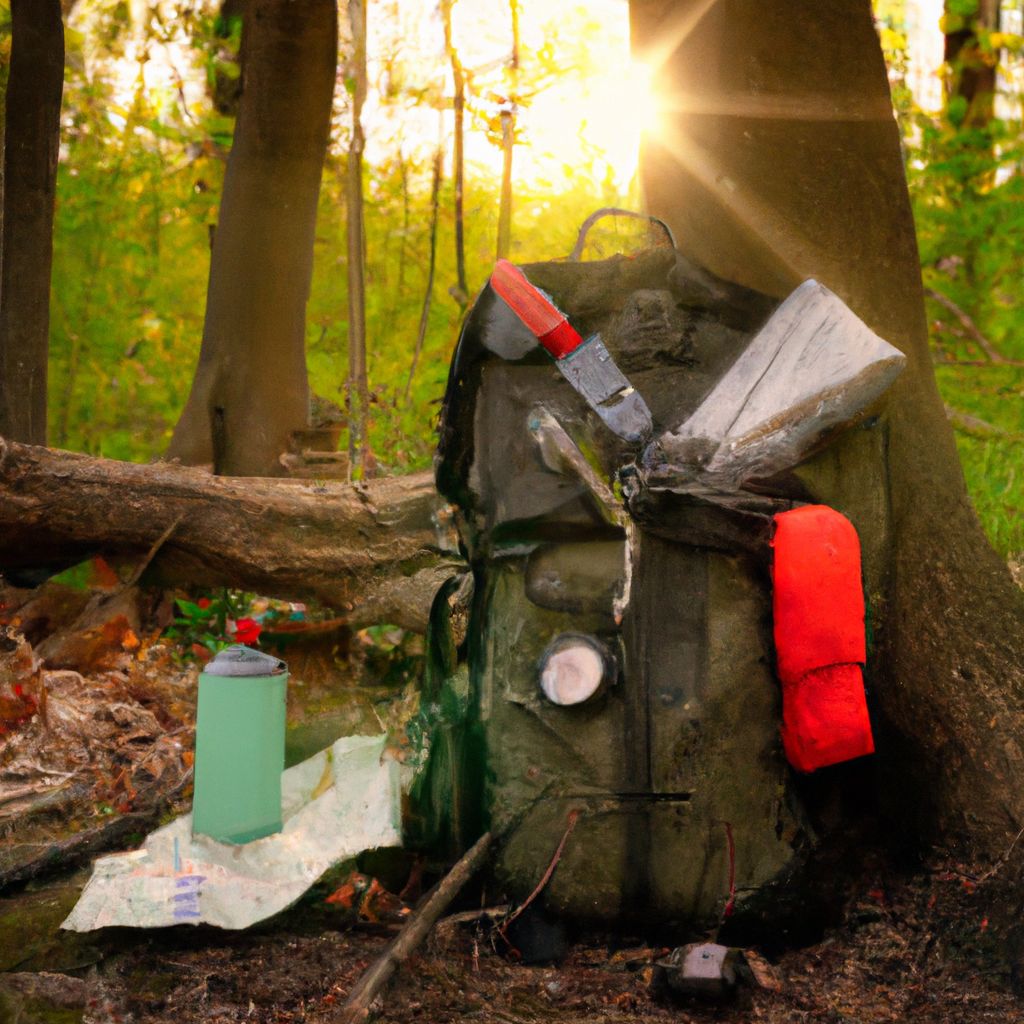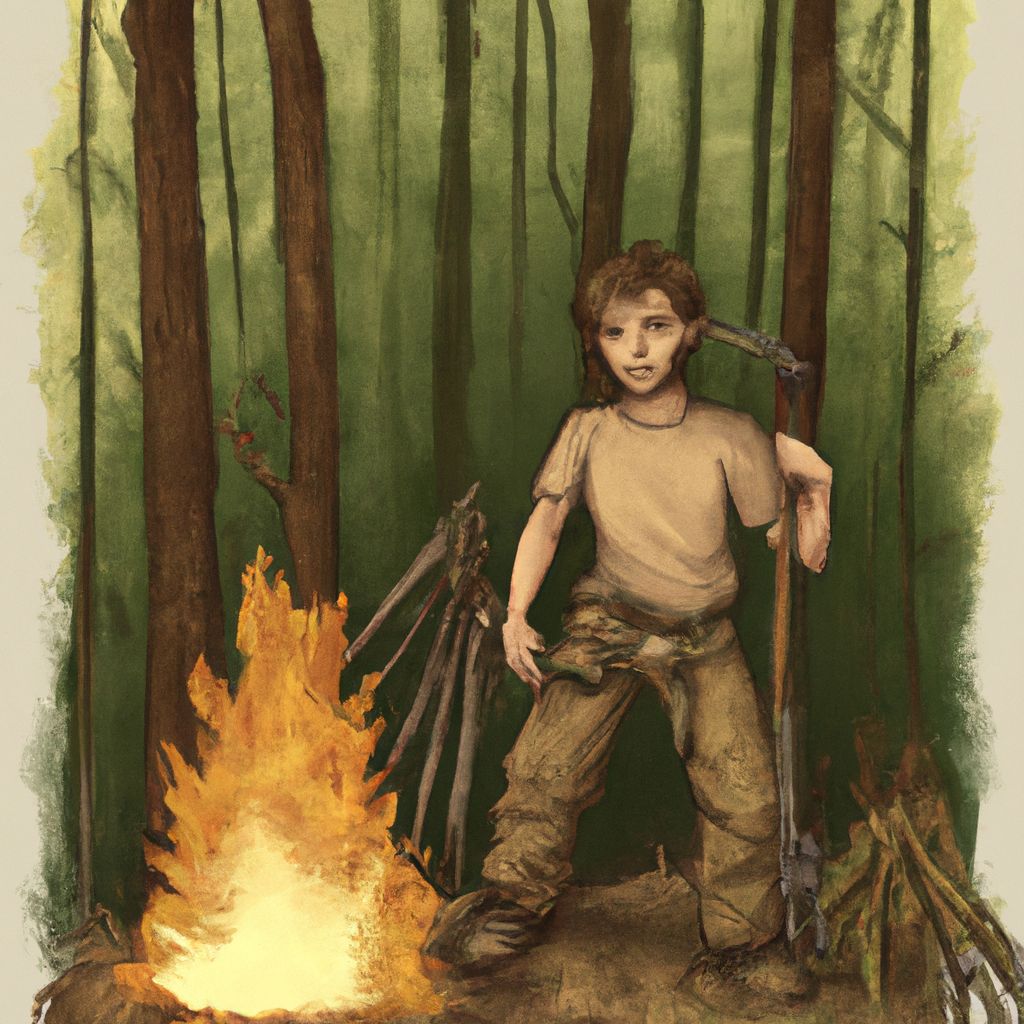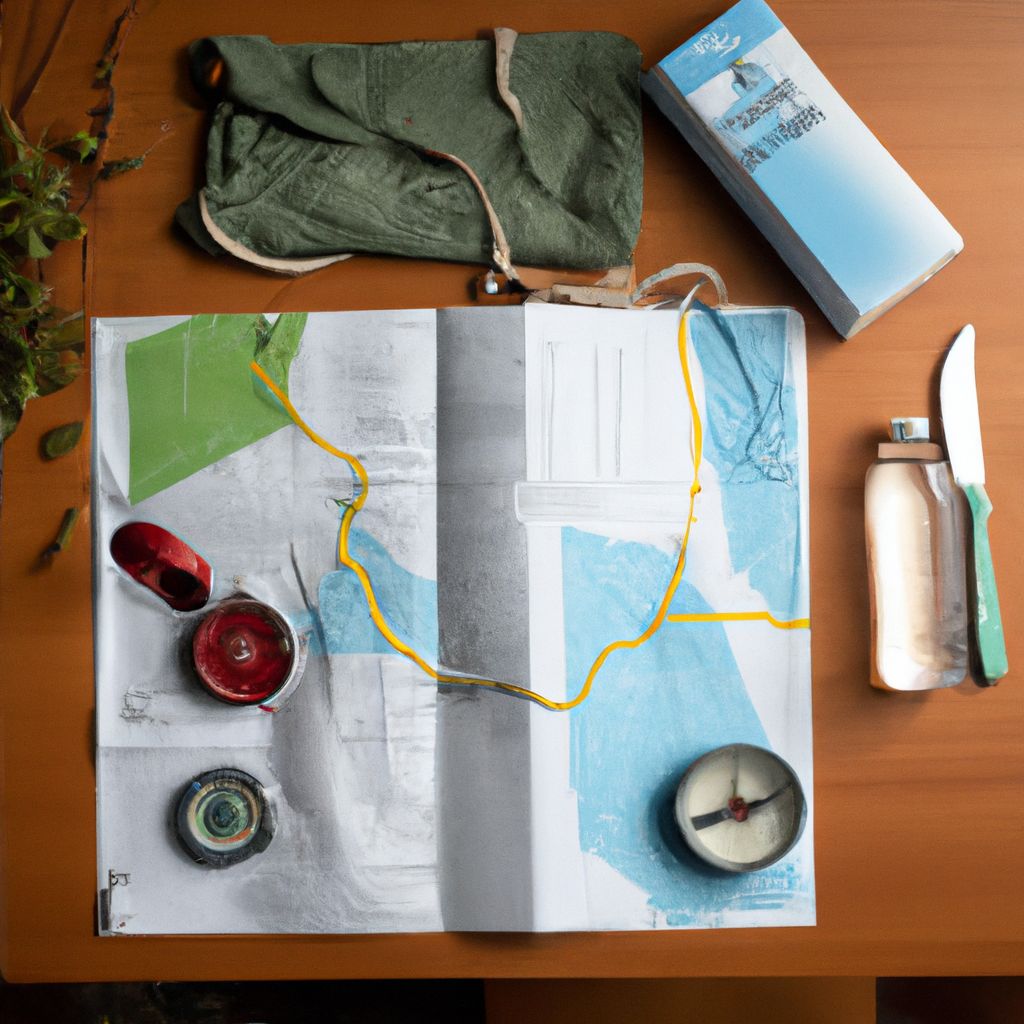- Introduction to Wilderness Survival
- Essential Survival Skills
- Wilderness First Aid Basics
- Survival Gear Essentials
- Navigating in the Wilderness
- Finding and Purifying Water
- Identifying and Finding Food
- Dealing with Wild Animals
- Surviving in Different Climates and Terrains
- Conclusion: Mindset for Survival
Introduction to Wilderness Survival

Wilderness survival is, quite simply, the art of staying alive. Defined by the ability to persevere in the face of nature's harshest conditions, it's a skill set that has become increasingly important in today's unpredictable world. Whether you're an outdoor enthusiast, an avid hiker, or simply someone who values self-sufficiency, understanding the principles of wilderness survival can be invaluable.
The importance of wilderness survival cannot be overstated. Each year, numerous individuals find themselves unexpectedly stranded in remote areas due to natural disasters, accidents, or lost bearings. In fact, according to the National Park Service, there are over 3,000 search and rescue missions in the United States each year.Source: National Park Service
Additionally, the knowledge gained from studying wilderness survival can also instill a deeper appreciation for nature and our environment. It teaches us to respect the forces of nature, understand its nuances, and coexist with it harmoniously.
The mindset required for survival is as critical as the physical skills. Resilience, determination, and the ability to stay calm under pressure are key. These mental attributes, coupled with practical knowledge, can make the difference between life and death in a survival situation.
Survival skills include fire starting, shelter building, finding water, and foraging for food. They also cover navigational skills and first aid. We'll delve into these in more detail in subsequent sections of this guide.
So whether you're planning a wilderness adventure, preparing for a worst-case scenario, or simply seeking to better understand and respect the natural world, wilderness survival knowledge is a powerful tool.
Essential Survival Skills

Building a Shelter
Shelter is one of the three basic human needs and it's critical in a survival situation to protect against the elements.
- Choose a location: Find a spot that's dry, flat, and close to materials you'll need like branches and leaves. It should also be away from hazards like falling rocks or rising water.
- Construct a framework: Use sturdy branches to create a frame. A simple lean-to structure can be made by leaning one large branch against a tree, and leaning smaller branches at an angle against the large branch.
- Insulate: Cover the framework with leaves, moss, or grass for insulation. The thicker this layer, the better it will protect against wind and rain.
Finding Water
Water is even more critical than food in a survival situation. The human body can only survive a few days without it.
- Look for natural sources: Rivers, streams, and springs are the best sources of water. Be sure to purify any water you find.
- Dew collection: In the early morning, you can collect dew by tying a cloth around your ankles and walking through grassy areas, then wringing out the cloth.
- Rainwater: Rainwater is generally safe to drink. Use any available containers to collect it.
Building a Fire
Fire provides warmth, light, and a way to cook food and purify water. It's also a morale booster and a signal for rescuers.
- Prepare the site: Clear an area of all vegetation. Surround your fire area with rocks to contain it.
- Gather materials: You'll need tinder (small, easily flammable material), kindling (small sticks), and fuel (larger wood).
- Build and light the fire: Start with a small pile of tinder. Use a match, lighter, or fire starter to ignite it. Once the tinder is burning, add kindling. As the kindling catches fire, add larger pieces of wood. Always keep the fire under control.
Wilderness First Aid Basics

Wilderness First Aid Basics
First aid skills are critical in all situations, but they're especially vital when you're in the wilderness and professional medical help may be hours or days away. Here are some basic wilderness first aid skills you should know.
Treating Cuts and Scrapes
- Clean the wound: Rinse the wound with clean water to remove any dirt or debris.
- Apply antiseptic: If available, apply an antiseptic to prevent infection.
- Bandage the wound: Cover the wound with a clean bandage or cloth to protect it and help stop the bleeding.
Handling Sprains and Strains
- Rest and elevate: Avoid using the injured limb and keep it elevated to reduce swelling.
- Ice: Apply ice or a cold pack to the injury for 20 minutes at a time.
- Compression: If available, wrap the injured area with a bandage to provide support.
Recognizing and Treating Hypothermia
Hypothermia, a dangerously low body temperature, is a serious risk in cold environments. Signs include shivering, confusion, and loss of coordination.
- Get out of the cold: Move the person to a warmer place if possible. If you're in the wilderness, get them into a shelter or sleeping bag.
- Remove wet clothing: If the person's clothes are wet, replace them with dry ones.
- Warm the person: Use body heat, a fire or warm drinks if available. Avoid direct heat which can damage the skin and underlying tissues.
Survival Gear Essentials

Survival Gear Essentials
Equipping yourself with the right gear can significantly increase your chances of survival in the wilderness. Here's a closer look at some of the essential survival gear you should always have on hand.
Knife
A good survival knife is one of the most versatile tools you can have. It can be used for cutting, carving, building shelters, preparing food, starting fires, and more. Choose a knife that's sturdy, sharp, and comfortable to use. Fixed-blade knives are generally more durable than folding knives.
Fire Starter
As discussed in the survival skills section, fire is crucial for warmth, cooking, and signaling. There are many types of fire starters, from simple matches or lighters to more advanced flint and steel or magnesium fire starters. It's a good idea to have multiple ways to start a fire, in case one fails.
Emergency Blanket
Also known as space blankets, these lightweight, compact sheets are designed to reflect heat back to your body. They can be a lifesaver in cold environments, helping to prevent hypothermia. They can also be used as a shelter, ground cover, or signaling device.
Remember, the right gear is a critical part of survival, but it's just as important to know how to use it. Regularly practice with your gear so you're familiar with its use in a real survival situation.
Navigating in the Wilderness

Navigating in the Wilderness
Navigational skills are absolutely essential for wilderness survival. Becoming disoriented or lost can lead to dangerous situations, so knowing how to find your way is a vital part of any survival skill set. Here's a closer look at some basic navigation skills.
Using a Compass
A compass is a reliable, battery-free tool for navigation. It works by aligning with the Earth's magnetic field to point towards magnetic north.
- Hold the compass flat in your hand: You want to ensure the needle can move freely.
- Rotate the compass: Rotate it until the orienting arrow aligns with the red needle (which points to magnetic north).
- Read the bearing: The top of the compass will now show your direction in degrees.
Reading a Map
Topographic maps provide detailed information about the terrain and features of an area.
- Understand the scale: The scale shows how map distances correspond to real-world distances.
- Read contour lines: These lines represent the shape and elevation of the terrain. Closely spaced lines indicate steep slopes, while widely spaced lines suggest gentle slopes.
- Identify landmarks: Features like rivers, peaks, and forests can help you orient yourself.
Using the Stars for Direction
In the northern hemisphere, the North Star (Polaris) can be used for navigation. It's found by locating the Big Dipper constellation and following the line created by the two stars at the edge of the 'cup' upwards.
In the southern hemisphere, the Southern Cross constellation can help determine south. Draw a line through the long axis of the Southern Cross, then draw a perpendicular line through the two 'pointer' stars. Where these two lines meet points south.
Finding and Purifying Water

Finding and Purifying Water
Water is vital for survival, and in a wilderness situation, finding a reliable water source is a top priority. However, it's also important to ensure the water is safe to drink. Here's how to find and purify water in the wilderness.
Finding Water
As mentioned earlier, natural sources like rivers, streams, and springs can be good sources of water. Dew collection and rainwater can also provide drinkable water. In addition, areas with lush vegetation or swarming insects often indicate the presence of water nearby.
Purifying Water
Once you've found a water source, it's crucial to purify it to remove harmful bacteria, viruses, and parasites. Here are some basic methods.
- Boiling: Boiling is one of the most effective methods to purify water. Bring the water to a rolling boil and maintain it for at least one minute.
- Water filters: Portable water filters can remove many pathogens. They're lightweight and easy to use, but they don't remove all types of contaminants.
- Chemical treatments: Iodine or chlorine tablets can kill many pathogens. Follow the instructions on the package for correct usage.
- UV light: Specialized devices use ultraviolet light to kill bacteria and viruses. They require batteries but are effective and fast.
It's essential to remember that while these methods can make water safer to drink, they may not remove all types of contaminants. Always prioritize finding the cleanest water source possible.
Identifying and Finding Food

Identifying and Finding Food
In a wilderness survival situation, finding food can be a challenge. While the human body can survive for weeks without food, eating can boost your morale and provide energy. Here's a look at wilderness foraging and hunting basics.
Identifying Edible Plants
Many plants in the wilderness are edible, but it's crucial to know which ones are safe to eat as some are poisonous.
- Learn before you go: Familiarize yourself with local plant life before you venture into the wilderness. There are many field guides and online resources available.
- Perform a test: If you're unsure about a plant, you can perform a universal edibility test. It involves several steps, including skin contact and tasting a small amount, to check for adverse reactions.
Edible Insects
Insects are a good source of protein. Look for insects that are slow-moving and easy to catch, like grubs, ants, and beetles. Avoid brightly colored, hairy, or pungent insects as they're often toxic.
Trapping and Preparing Small Game
Small game like squirrels, rabbits, and birds can provide substantial nourishment. Primitive traps and snares can be used to catch them.
- Build a trap: There are many types of traps, from simple pitfall traps to more complex snares. Again, knowledge and practice before you venture into the wilderness are key.
- Prepare the game: Once caught, the animal must be properly cleaned and cooked to ensure it's safe to eat. This includes skinning, gutting, and thoroughly cooking the meat.
Remember, hunting and trapping should be done responsibly and ethically, and in accordance with local laws and regulations.
Dealing with Wild Animals

Dealing with Wild Animals
Encountering wild animals can be one of the most thrilling - and potentially dangerous - aspects of being in the wilderness. Understanding how to safely interact with these creatures is crucial. Here are some general guidelines.
Bears
Bears are often avoided by making noise as you move through their habitats, as they usually prefer to avoid humans. If you do encounter a bear, speak in a calm, assertive voice and back away slowly. Do not run or climb trees. If a bear attacks, fight back vigorously.
Snakes
Most snakes will retreat if given the opportunity. Give them a wide berth and move away slowly. If you're bitten by a snake, seek medical attention immediately, even if you think the snake isn't venomous.
Large Cats (Mountain Lions, Cougars)
Make yourself appear larger by raising your arms and standing on your tiptoes. Maintain eye contact but do not corner or approach the animal. If attacked, fight back and aim for the eyes and nose.
Small Mammals (Raccoons, Squirrels)
These animals can carry diseases and be aggressive if cornered. It's best to avoid them and secure your food to prevent attracting them to your campsite.
Always remember, you're a visitor in their habitat. Respect wildlife and observe from a distance. Never feed wild animals, and store your food securely to discourage them from approaching your camp.
Surviving in Different Climates and Terrains

Surviving in Different Climates and Terrains
Different climates and terrains present their own unique challenges and require specific survival strategies. Here's a brief overview of how to survive in various environments.
Deserts
Deserts are characterized by extreme heat during the day and cold at night. Dehydration and heat exhaustion are major risks.
- Stay cool: Limit physical exertion during the hottest parts of the day. Seek shade whenever possible.
- Stay hydrated: Conserve your water supply and look for signs of water, such as green vegetation or insects.
Forests
Forests provide shelter and resources, but can also be challenging to navigate due to dense vegetation.
- Stay visible: Create a shelter or signal near a clearing or water source where it's more likely to be seen.
- Stay safe: Be aware of potential hazards like poisonous plants, insects, and predators.
Snow-Covered Landscapes
Snow-covered landscapes pose risks of hypothermia and frostbite. Travel can be difficult and visibility often limited.
- Stay warm: Dress in layers to conserve body heat. Stay dry to prevent hypothermia.
- Stay safe: Be aware of signs of frostbite and hypothermia. Be cautious of hazards like ice-covered bodies of water and avalanche-prone slopes.
Regardless of the climate or terrain, always remember the basics of survival: shelter, water, fire, and food. Tailor your strategies to suit the environment and conditions.
Conclusion: Mindset for Survival

Mindset for Survival
In the face of adversity, maintaining a positive mindset can be your greatest asset. Survival is as much a mental challenge as it is physical. Staying calm, thinking clearly, and remaining focused can significantly improve your chances of making it through.
Remember, fear and panic are your enemies. They can cloud your judgement and lead to poor decisions. Instead, take a moment to assess your situation, prioritize your needs, and formulate a plan.
Resilience and determination are key. You may encounter setbacks, but it's essential to keep going. As the saying goes, "Survival isn't about being fearless. It's about making a decision, getting on and doing it, because I'll be damned if I'm going to let the situation beat me."
Finally, the importance of preparation and training cannot be overstated. Equip yourself with the knowledge and skills you need before you venture into the wilderness. Practice your skills regularly and familiarize yourself with your gear. The more prepared you are, the more confident you'll be if you ever find yourself in a survival situation.





